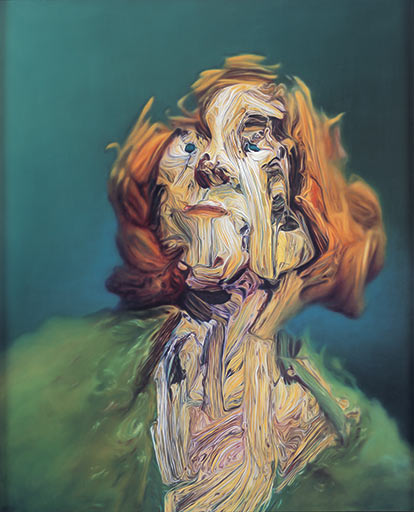2021: Time for novelty, surprise, harmony, parsimony, and empathy!
Can we talk about the neuroscience of art? This is the question that French neurobiologist Jean-Pierre Changeux addresses in his beautiful book The Beauty in the Brain or La Beauté dans le Cerveau (Odile Jacob, 2016). Prof. Changeux, also a humanist, a philosopher, and an art collector, describes how the human brain behaves when making or contemplating a work of art. To make a long story short, he argues that the neural bases of aesthetic pleasure are the product of the link between cognitive and emotional brain functions, in other words, the harmony between reason and emotion. Moreover, he gives some tips on how artists can maximize the impact of their works on their audience.

Prof. Changeux shows that both the creation and the appreciation of art are the result of physicochemical reactions in the brain and of the organization of neurons. As he explains, the brain evolves from birth to adulthood due to social and cultural factors that play an important role in the appreciation of visual arts.
Now, how understanding the brain can help visual artists to provide the spectator with a powerful aesthetic experience? Prof. Changeux affirms that artistic creation never occurs at random, but it is the result of 1) a Darwinian process of trial and error, and 2) the application of a series of innate rules. Among these rules, the search for novelty and surprise is crucial in the making of a work of art, because it triggers a significant neural response to the viewer. Brain imaging studies show that the first exposure to a surprising piece of art immediately activates the frontal cortex (cognitive) and the cingulate cortex (limbic). Good examples are works by British artists Glenn Brown and Damien Hirst. However, when encountering the déjà vu or when a subject becomes familiar, like a lovely chickadee painting, the brain activity gradually shuts down.
Another aspect artists should always consider is the search for harmony between the parts and the whole. He also mentions the importance of economy of means or “parsimony” a term borrowed from the economist and psychologist Herbert Simon. Distinguishing between simplicity and parsimony, Simon does not think we should seek “the absolutely simplest law,” but “the law that is simplest in relation to a range of phenomena”, hence to be parsimonious. The American artist Mark Rothko comes immediately to my mind as a master of parsimony. Finally, since art undoubtedly involves “the recognition of the other as oneself”, the search for shared emotions also activates a neural response. Human sculptures by Australian artist Ron Mueck can move us deeply because they make us feel our fear of death and vulnerability.
To sum up, in 2021 let’s aim for a combination of novelty, surprise, harmony, parsimony, and empathy. This is what we are trying to communicate during our virtual painting classes and art workshops in Europe.


I find your article very interesting, Monika. It gives me a good deal to think about. Now, about the chickadees . . .
Thanks Elizabeth!
Thanks Elizabeth!
Very interesting Monica. The same applies to architecture.
Merci Jean. Absolutely true about architecture. Yesterday we had a productive conversation with the top neuroscientist Oshin Vartanian (University of Toronto) who is currently advising numerous architects in Canada about this question.
Merci Jean. Absolutely true about architecture. Yesterday we had a productive conversation with the top neuroscientist Oshin Vartanian (University of Toronto) who is currently advising numerous architects in Canada about this question.
Very simply and well thought out article which we can all follow without having to read the whole book! Thank you Monica
Thanks Denise!
Thanks Denise!
Interesting article which points out correlation between knowledge of brain functioning & visual art aesthetics. Thank you, Monica
Thanks Carmen!
Thanks Carmen!
Ah the brain! An amazing organ…complex, vital for our survival, but so easily damaged in many ways. We may think we have control of our thoughts, but do we have control of our reactions to stimuli? Do we “dull” our senses, do we react in spite of our senses…maybe to be seen as reacting the “right” way. An extremely interesting topic and article. Indeed worthy of further thought and stimulus.
Thanks for your comment Heather!
An interesting synopsis of what sounds like a fascinating read. Some thoughts that came to mind … “shock-value”-conceived works vs those depicting the sublime and grace in the ordinary (…those chickadees, for example!); aesthetic pleasure and balance vs dissonance and tension; tracking resulting physiological responses to the neural triggers in both the viewer and the creator of works of art … Thank you, Monica!
Merci Katherine!